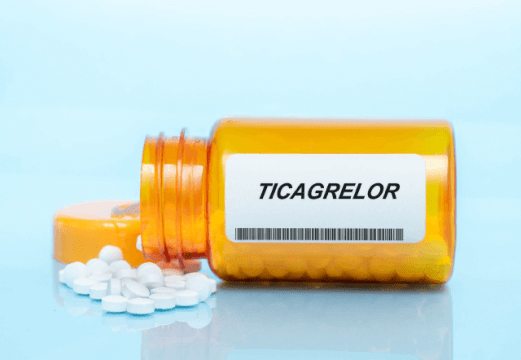Obesity is growing dramatically around the world, regardless of income. For instance, 53% of US adults are obese, and 53% of people in the EU are overweight. The actual impact of elevated body mass index (BMI) in antiaggregation safety and efficacy, being it DAPT or SAPT, has not yet been properly looked at. This is…
Adherence to P2Y12 Inhibitors in Acute Coronary Syndrome: Prognosis
Non-adherence to medication in patients with acute coronary syndrome (ACS) remains to be solved; the use of polypills and a closer follow up have been tried out (follow up calls and motivation groups). Antiaggregation guidelines recommend dual antiplatelet therapy (DAPT) for at least one year after ACS. Adherence to drug treatment is comprised of multiple…
Ticagrelor Monotherapy: Valid after 12 Months?
Recent studies on antiplatelet antiaggregation support the use of short dual antiaggregation therapy (DAPT), even in unforeseen scenarios, such as complex PCI. On the contrary, in patients with high ischemic risk, there is still evidence in favor of prolonged antiaggregation, mainly through the DAPT study, which showed lower risk of major ischemic events with DAPT…
An Abbreviated Dual Antiplatelet Regimen Is Also Safe in Patients at High Risk for Bleeding Undergoing Complex Angioplasty
The MASTER DAPT study analyzed the results of an abbreviated (mean 34 days) vs. conventional dual antiplatelet therapy (DAPT) in 4579 patients treated with angioplasty and a biodegradable polymer sirolimus-eluting stent. This recent publication on the same study analyzed the evolution within the same strategies of the subgroup of patients with complex angioplasty and compared…
High Risk of Bleeding after PCI: More Evidence for Short DAPT
Dual antiaggregation therapy (DAPT) with ASA and P2Y12 during 6 to 12 months is the indicated strategy after DES stenting to reduce ischemic events. However, in patients with elevated risk of bleeding (HBR) guideline and expert recommendations is 1-6 months, since there is plenty of evidence in favor, except for a randomized study, the MASTER…
Two Safe Stents at Two Years in High Bleeding Risk
There is a consistent number of patients presenting high risk of bleeding. In this context, receiving dual antiplatelet therapy (DAPT) for 12 months would not be advisable. Even though the European and American guidelines recommend 1 to 6 months for chronic and acute syndromes in this group, these are often complex PCI cases, which makes…
Results of Zotarolimus-Eluting Stents vs Biolimus-Eluting Polymer-Free Stents After 2 Years. Are They Safe in Patients at High Risk for Bleeding?
The proportion of patients treated with coronary angioplasty who are at a high risk for bleeding is increasing. In this population, extended dual antithrombotic therapy increases the risk of bleeding. The 1-year randomized Onyx one study has demonstrated the non-inferiority of zotarolimus-eluting stents (ZES) vs. biolimus-coated polymer-free stent BioFreedom (DCS). Patients received dual-antiplatelet therapy (DAPT)…
Prophylactic Rivaroxaban Therapy for Left Ventricular Thrombus after ST-Segment Elevation Acute Coronary Syndrome
The incidence of left ventricular thrombosis (LVT) after anterior ST-segment elevation myocardial infarction (STEMI) ranges from 4% to 26%. This is associated with bad long-term evolution. In the past, triple-scheme therapy (vitamin K antagonist plus dual antiplatelet therapy) was recommended to prevent LVT, despite the lack of high-quality scientific evidence and an increase in the…
Should Aspirin Be the Standard of Secondary Prevention of MACE?
Much has been published recently on short term dual antiplatelet therapy (DAPT) both in acute (ACS) and chronic coronary syndrome (CCS) as well as safety of P2Y12 inhibitor monotherapy. When discussing secondary prevention in patients with established coronary artery disease, aspirin (ASA) has been the preferred drug for the prevention of new atherothrombotic events. This…
WOEST 2 | Dual Versus Triple Antithrombotic Scheme in the Real World.
The WOEST study found a significant reduction in bleeding complications post PCI with oral anticoagulation indication (OAC) when treating patients with dual antiplatelet therapy (DAPT) vs. the triple antithrombotic scheme. Several randomized studies have shown these results. At present, the guidelines recommend using the triple antithrombotic scheme in patients according to ischemic and bleeding risk. …
Ticagrelor Shows Benefits in Coronary Microvascular Function after NSTEMI
Coronary microvascular disfunction (CMD) is an important long-term prognosis predictor. CMD treatment can be an effective therapeutic strategy for patients with acute coronary syndrome (ACS). Nevertheless, more studies are needed to assess different strategies. In the PLATO (Study of Platelet Inhibition and Patient Outcomes) study, ticagrelor vs. clopidogrel reduced ischemic events and overall mortality in…






